Kingston HyperX Cloud II Review: King of Comfort
The Kingston HyperX Cloud II is one of the most stylish, coziest sub-$100 headsets available, though its low end is lacking.
Why you can trust Tom's Guide
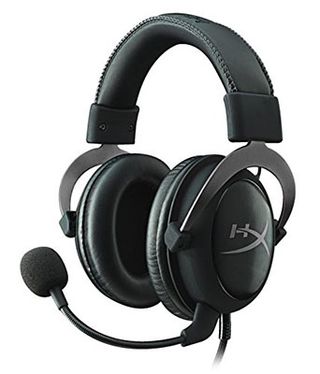
Last year, Kingston shocked many gamers by releasing the HyperX Cloud, a surprisingly good gaming headset from folks who are known for selling storage drives. The company's new HyperX Cloud II retains its predecessor's cozy, stylish design while adding virtual 7.1 surround sound for extra immersion. The result is a good-sounding headset whose comfort level is in a class of its own, though its weak low end and lack of customization options may displease hardcore audiophiles.
Design
The HyperX Cloud II's stylish, understated appearance makes it one of the best-looking headsets you can get for less than $100. The black headset's leatherette-coated band and ear cups are connected by metal forks on either side, which allow each ear cup to be adjusted about an inch up or down. The ear cups themselves swivel back and forth, and sport slick, metal-brushed exteriors, while the top of the band packs an attractively embroidered HyperX logo.
The Cloud II's mic extends a generous 6 inches, and features a highly flexible coil and a large foam tip. The microphone is completely detachable, transforming the Cloud II into a pretty sweet-looking pair of headphones when removed.
The Cloud II's included USB dongle sports controls for chat volume, game volume, toggling 7.1 surround sound and muting the mic, as well as a clip for attaching it to your clothing. If you want to use the headset on a PS4, Xbox One (adapter required) or mobile device, you can simply forgo the dongle and plug the Cloud II's 3.5mm jack into your gadget of choice.
MORE: The Best Headphones Available Now
Comfort
The Cloud II might be the most comfortable gaming headset I've ever worn. Thanks to its feathery 11-ounce construction and memory-foam ear cups and headband, I never got the urge to take off the headset over two days of frequent use.

The Cloud II's cans fit snugly over my ears, yet never managed to feel too tight. A co-worker found the headset to be equally comfortable, calling the fit "just right."
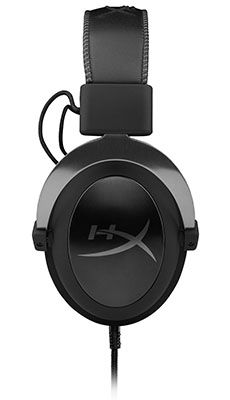
If the feel of leatherette on your ears isn't your thing, you can swap the default ear-cup covers for a pair of included, similarly cozy plush ones. I personally preferred the leatherlike covers, but Kingston's decision to give gamers an option is a great touch.
Gaming Performance
The HyperX Cloud II's audio output was impressive but not as well-rounded as I hoped it would be. I battle-tested the cans during a few skirmishes in Titanfall and a quick, slightly bloody Paris adventure in Assassin's Creed Unity, and experienced similar pros and cons in both games.
Overall, the Cloud II proved to be an apt competitive companion in Titanfall. It was easy to determine where enemy gunfire was coming from, and every burst of my rifle provided a satisfying rattle. However, my Titanfall session was one of several occasions in which the Cloud II's low-end frequencies didn't totally deliver — the sound of hulking mechs launching missiles at one another simply didn't have the bass-heavy boom that I got from the similarly priced Polk Striker ZX ($89).
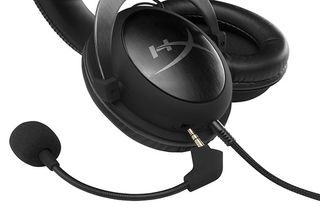
The Cloud II's lack of low end wasn't a big problem in Assassin's Creed Unity, a game more about lush ambiance than frequent explosions. I could distinguish the myriad conversations happening on a crowded Paris street, and noticed lots of sonic detail when swimming through a river or stomping across a wooden deck. When it came time to engage some bad dudes with my blade, the game's subtle slicing noises sounded crisp.

Turning on the Cloud II's virtual 7.1 surround sound didn't prove to be a game changer, but it definitely made a difference. The feature helped better highlight details such as the chirpy birds and chatty townsfolk of Assassin's Creed, as well as the distant shoot-outs and ominous soundtrack of Titanfall.
Unfortunately, other than the volume and surround-sound controls built into the Cloud II's dongle, you have little control over how the headset performs for each game. There's no software to accompany the peripheral, so you won't be able to create sound profiles or tweak individual parameters, such as bass and treble.
The Cloud II's mic performed well in my testing; my co-worker heard me loud and clear as we chatted over Skype. My colleague noted that there was minimal background noise, and was able to make out my voice even as I moved the mic farther and farther away from my face.
MORE: Best Gaming Keyboards
Multimedia Performance
I had a similar experience when listening to music on the Cloud II: It was enjoyable, but I wanted fuller sound. From Taylor Swift's synthetic pop tunes to guitar-heavy tracks from My Chemical Romance and Fall Out Boy, I generally heard crisp vocals and guitars, but there was a distinct lack of bass. Songs also became a bit muddy when I cranked their volume all the way up.
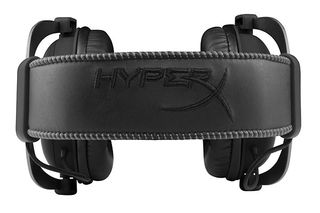
The headset did a fine job of highlighting the dramatic dialogue and superhero brawls in The Avengers: Age of Ultron trailer. As I experienced with Titanfall, however, I simply didn't feel the low-end impact when stuff blew to bits.
Bottom Line
If you want a good-sounding gaming headset for less than $100, the HyperX Cloud II ($99) is one of the most comfortable, stylish options you can buy. The headset's virtual 7.1 surround-sound capabilities do an admirable job of highlighting your games' more subtle sounds, and its lightweight design makes it a cozy companion for marathon play sessions.
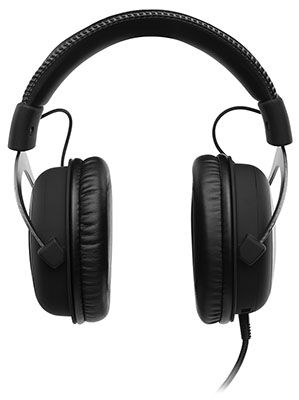
My only gripes with the Cloud II are that it lacks bass and that there's no included software for creating profiles or tweaking audio parameters. If you're willing to go wireless for the same price, you might want to check out the Logitech G930, which offers all of the personalization options you could want. However, I'll take that trade-off and keep the Cloud II on — it's just that darn comfy.
Sign up to get the BEST of Tom’s Guide direct to your inbox.
Upgrade your life with a daily dose of the biggest tech news, lifestyle hacks and our curated analysis. Be the first to know about cutting-edge gadgets and the hottest deals.
Mike Andronico is Senior Writer at CNNUnderscored. He was formerly Managing Editor at Tom's Guide, where he wrote extensively on gaming, as well as running the show on the news front. When not at work, you can usually catch him playing Street Fighter, devouring Twitch streams and trying to convince people that Hawkeye is the best Avenger.

